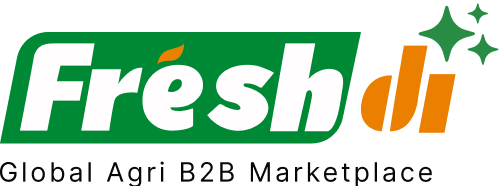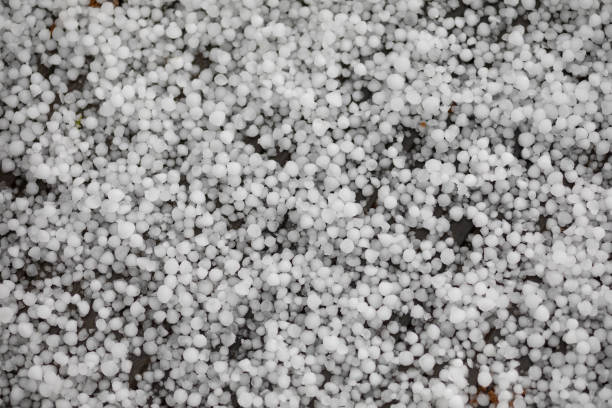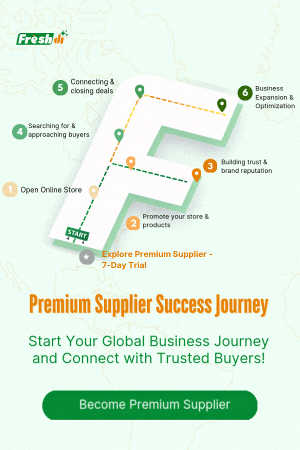Introduction – India’s Urea Market: A Quantitative Overview
India has long been a dominant player in the global Urea trade. As of 2025, the country stands among the top producers and exporters of Urea, contributing significantly to the world’s fertilizer supply chain. With agriculture forming the backbone of the Indian economy, Urea—being the most widely used nitrogen-based fertilizer—has seen consistent growth in both production volumes and export figures.
What makes India truly unique is its dual role as both a major consumer and exporter. This duality creates a dynamic market where pricing, availability, and supplier performance shift rapidly. For businesses looking to import Urea from India, relying on guesswork or outdated networks is no longer viable.
That’s where data comes into play.
Platforms like Freshdi are transforming how B2B buyers source Urea by offering real-time RFQ trends, supplier verifications, and export data insights—allowing for smarter, faster, and more reliable sourcing decisions.
Let’s dive deep into the numbers and spotlight the top-performing Urea suppliers in India for June 2025.
Deep Dive – Key Production, Export Statistics & Current Demand Data
India’s Urea production crossed a staggering 25 million metric tons in FY 2024–25, with over 3 million metric tons exported globally. Key export destinations include countries across Southeast Asia, Africa, and Latin America—with Bangladesh, Nepal, and Brazil being top buyers.
What’s driving this surge?
A combination of increased domestic production capacity, favorable government policies, and a refined export strategy. But perhaps the most telling insight comes from RFQ (Request for Quotation) volumes tracked on platforms like Freshdi. In the last quarter alone, Urea RFQs surged by 18%, indicating rising global demand and seasonal buying patterns peaking just before the monsoon planting season.
These RFQ trends not only mirror export statistics but also highlight which suppliers are consistently meeting international demand—making them prime candidates for strategic sourcing.
Top 6 Verified Urea Suppliers in India – Top Tier Based on Export Data
Choosing the right supplier isn’t just about who offers the lowest price—it’s about reliability, export capacity, certification, and global reputation. Based on export performance, buyer feedback, and verification data from Freshdi, here are the Top 6 Urea Suppliers in India for June 2025:
1. Eminence Tech System
- Known for consistent export volume and excellent logistics.
- Offers granular, prilled, and N46 Urea.
- ISO-certified and preferred by buyers in Africa and Southeast Asia.
- High RFQ engagement on Freshdi.
2. CRH Readymoney Pvt. Ltd.
- Specializes in Urea for agricultural and industrial use.
- Established trade networks in Latin American countries.
- Strong buyer ratings on pricing transparency and shipment reliability.
- Frequently featured on Freshdi’s “Top Exporters” list.
3. Maruti Associates
- Offers Carbamide (Urea) in bulk packaging options.
- Known for competitive pricing and quick turnaround times.
- Active in both domestic and export markets.
- Verified supplier with consistent RFQ fulfillment.
4. Trance Line Global
- Diversified portfolio includes DAP, NPK, and Urea fertilizers.
- Popular among buyers looking for bundled fertilizer deals.
- Strong export base in West Africa and the Middle East.
- High positive feedback for compliance and documentation.
5. Candour Agency
- Focuses on Urea N46 with high nitrogen content.
- Trusted by government procurement agencies.
- Regular supplier for seasonal bulk contracts.
- Excellent track record for quality and packaging.
6. Emarc India
- Offers both standard and customized Urea blends.
- Noted for flexible MOQs (Minimum Order Quantities).
- Rated highly by SMEs and agri-businesses.
- Strong presence on Freshdi with high buyer engagement.
Dynamic Ranking Note
It’s important to note that supplier rankings are not static. On Freshdi, suppliers are frequently evaluated and featured under categories like “Suppliers of the Month” or “Top Performers of the Quarter” based on RFQ response times, completed orders, and buyer feedback. So, while these six companies currently lead the pack, emerging suppliers may also climb the ranks based on their performance and reliability.
Market Navigation – Statistical Trends, Value Dynamics & Export Dynamics
Navigating India’s Urea market isn’t just about knowing who the top suppliers are—it’s also about understanding the underlying market forces that affect pricing, availability, and demand.
Let’s break it down:
Urea Variants in Demand
- Urea N46: Still the most demanded variant globally due to its high nitrogen content.
- Granular Urea: Preferred in mechanized farming systems.
- Prilled Urea: Common in regions with manual or semi-mechanized farming.
Seasonal Price Trends
Historically, Urea prices spike during:
- Pre-Monsoon (April–June): As farmers prepare for planting.
- Post-Monsoon (September–October): For the Rabi crop season.
Exporters often adjust pricing to reflect seasonal spikes in both domestic and international demand. Businesses sourcing Urea from India should consider these windows for strategic buying.
Export Dynamics
Indian suppliers are increasingly adopting FOB and CIF models to cater to international buyers. With improved port logistics and trade facilitation schemes, turnaround times are faster than ever. Additionally, platforms like Freshdi now offer real-time shipping data, helping businesses predict delivery windows and manage inventory efficiently.
Conclusion – Leveraging Data for Strategic Sourcing
India’s Urea export market is vast, competitive, and full of opportunities. But making the right sourcing decision requires more than just looking at a product catalog. It demands a data-first approach.
From understanding export volumes and seasonal pricing to identifying top-tier suppliers based on performance data, businesses must use every tool at their disposal.
That’s where platforms like Freshdi come in. By offering verified supplier profiles, RFQ trends, and dynamic market insights, Freshdi empowers businesses to make smarter sourcing decisions—faster and with greater confidence.
If you’re planning to import Urea from India, now is the time to act. Use data to your advantage, focus on verified suppliers, and align your purchase strategy with seasonal and market trends.
Key Takeaways
- India is a global leader in Urea production and export.
- Top suppliers offer a mix of product quality, export capability, and verified buyer feedback.
- Seasonal demand affects pricing—plan purchases around peak RFQ periods.
- Use platforms like Freshdi to access real-time data, trends, and supplier rankings.
Buyer’s Checklist: Sourcing Urea from India
- ✅ Verify supplier export history and certifications.
- ✅ Choose the right Urea variant for your market.
- ✅ Monitor RFQ trends and engage during peak sourcing periods.
- ✅ Use trade data to negotiate better terms.
- ✅ Leverage B2B platforms like Freshdi for supplier discovery and verification.
Future Outlook
As India continues to invest in fertilizer production and digitizes its export channels, we can expect even greater efficiency and transparency in the Urea supply chain. With tools like Freshdi leading the charge, the future of Urea sourcing is smarter, faster, and more data-driven than ever before.
FAQs
1. What is the most exported type of Urea from India?
Urea N46 is the most commonly exported variant due to its high nitrogen content and broad agricultural applications.
2. How can I verify if a Urea supplier in India is reliable?
Use trusted platforms like Freshdi, which offer supplier verification, export history, and buyer reviews.
3. When is the best time to source Urea from India?
Pre-monsoon (April–June) and post-monsoon (September–October) seasons see the most activity. Plan ahead to avoid price spikes.
4. Can small businesses source Urea in smaller quantities from India?
Yes, several suppliers like Emarc India offer flexible MOQ options suited for SMEs and agri-businesses.
5. Why should I use Freshdi for sourcing Urea?
Freshdi provides real-time RFQ trends, verified supplier profiles, and dynamic rankings—making it easier to make informed sourcing decisions.


